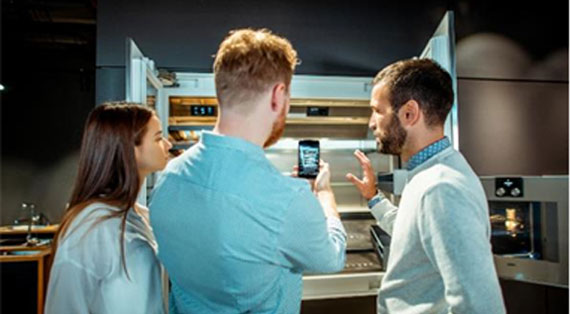
Training and Simulation
Organizations use Altoura to build collaborative and immersive training and simulation experiences to remotely onboard new workers and train existing workers on new products and business processes.
Using Altoura, workers can teleport to a shared space with their coworkers (who appear as avatars), see a photorealistic rendering (hologram) of their work environment and equipment, and complete training where instructional content is delivered via a 3D experience. Organizations have flexibility to implement a fully digital training simulation, or one where workers use physical equipment and follow spatial instruction presented as digital overlays.
This is a user’s perspective from within Altoura. Both the user and a coworker are training to operate a sophisticated machine by following spatial instructions placed within a photorealistic digital (3D) model of the physical machine and workspace.

Collaborative Task Guidance
Long considered the holy grail of work assistance, spatial computing is now a cost effective and extremely powerful work aid. Organizations use Altoura Experience Builder or Microsoft Dynamics 365 Guides to build installation instructions, repair procedures, etc.. Frontline workers can then view the guides and work aids (like video) with a headset or device to advance through the procedures.
Workers are collaborating on procedural instructions in a highly realistic model of their physical environment.

Design and Prototyping
Organizations use Altoura to improve and validate design and prototyping processes, accelerate decision making, and reduce costs associated with creating physical models. Users can upload existing 3D models into Altoura to enable an immersive virtual tour of the project/product details and features. This enables users to navigate the model details and invite other users to view and interact with a simple and convenient online portal where they can provide comments and feedback, driving deeper engagement with customers or employees.
Organizations also use Altoura to evaluate layouts by conducting spatial mapping of floors, walls, and ceilings. Users then import 3D models, drag, drop, and rotate models as 3D holograms to determine placement within their environment before investing in new equipment.
These users are in Altoura and are reviewing the planned design for a new building. A photorealistic model of the building design allows the users to get a 360-degree view of features and layout, and to post comments and documents that persist across multiple sessions.

Virtual Sales
Organizations use Altoura to create interactive sales and marketing experiences that grow revenue. Sellers and marketers can easily import 3D models of products into Altoura and create a virtual online product showroom where customers can view and manipulate detailed product “digital twins.”
Spatial selling answers customer questions quickly and naturally through full scale product visualization and interaction. In Altoura, sellers can explain complex mechanics or specialized product features with simple product animations, customized spatial computing experiences, and text or rich media annotations. And these conversations can take place with anyone, from anywhere using Altoura’s sophisticated VoIP and 3D avatars.

This salesperson is using Altoura on a smartphone to demonstrate appliances in a virtual 3D showroom so that prospective buyers can compare features and designs with those of physical models on the retail floor.